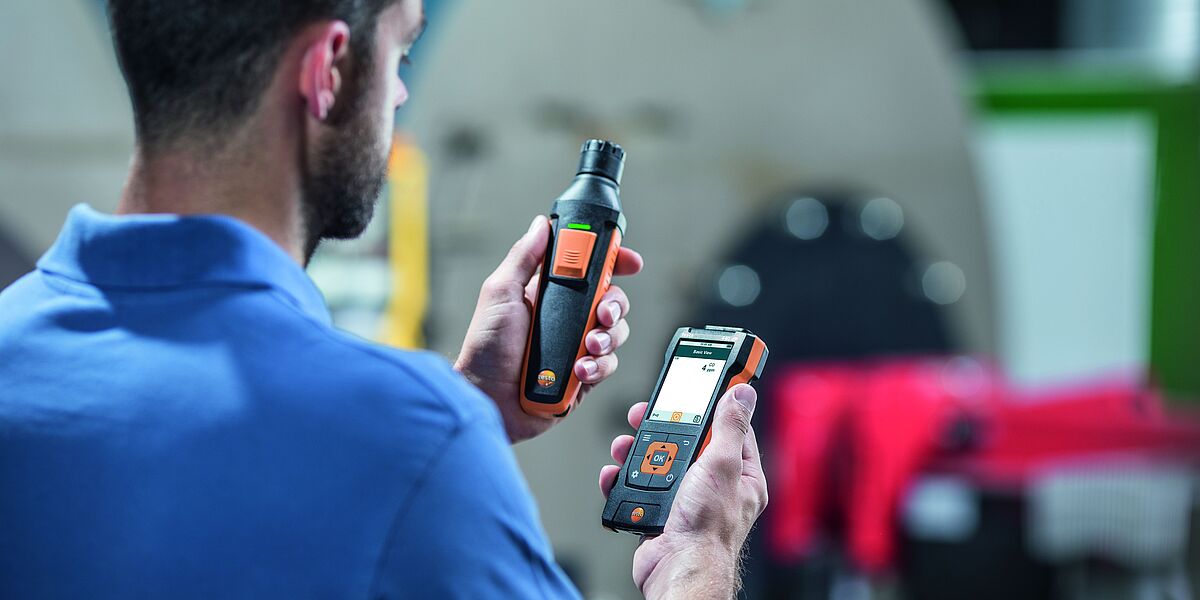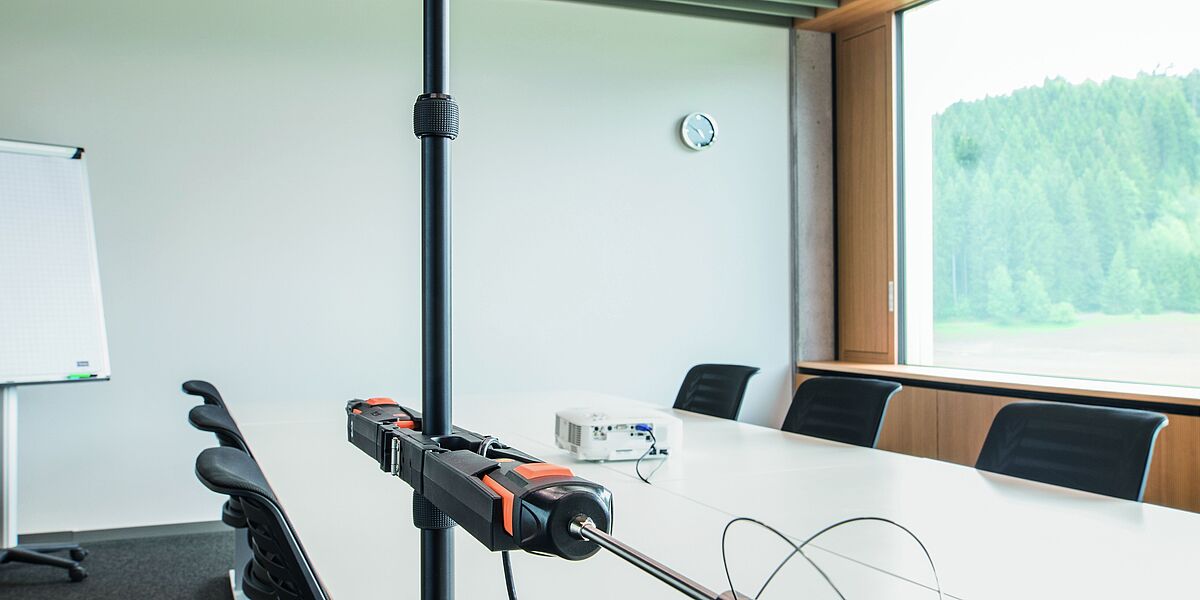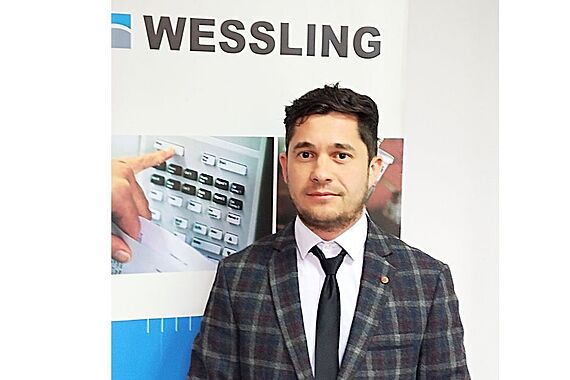Ensuring Quality of Life with the right measuring instruments
Fresh air is a basic requirement of life. Air quality in houses, offices, schools, hypermarkets, malls, public buildings, health centers or other private and public buildings where people spend much of their lives is a key factor in the healthy life and well-being of the population.
Reference WESSLING, Testo

Indoor air quality
Indoor air quality has become problematic primarily due to the growing importance of oil in recent decades. As the price of oil rose, energy efficiency stood out, leading to the spread of better insulation systems in buildings. However, in many cases we practically sealed the interior, removed the ventilation and added an amazing amount of chemicals to our apartment.
The WESSLING analysis report is a good guide for the measures to be taken to improve indoor air quality, which leads to increased comfort and health.
Poor air quality is a major health risk, causing lung disease, cardiovascular disease and cancer. Children, the elderly and people suffering from asthma and respiratory diseases are the most affected. In addition to the negative effects on health, air pollution has a considerable economic impact: increasing medical costs and reducing productivity through lost working days. Air pollution also affects the environment, affecting the quality of freshwater, soil and ecosystems.
Legislation
Indoor air quality refers to offices, living spaces, malls and other closed public or private spaces where for such locations we do not have legislation in the field. International guidelines and rules apply, especially American ones. For indoor air quality in workspaces, GD 1218 updated on January 27, 2015 applies, specifying the allowed values for the measured parameters.
What parameters do we measure?
The cocktail of chemicals and pollutants that we find inside buildings comes from part of the external environment (NOx, SO₂, O₂, CO and dust fractions (PM10, PM2.5) of different sizes), but also formaldehyde released mainly by furniture and volatile organic compounds (substances that contain carbon and have the ability to evaporate at room temperature) and residual heat, moisture and carbon dioxide as by-products of the respiration process. For indoor air safety, WESSLING Romania recommends monitoring the following important environmental parameters: ventilation in buildings, combustion products, volatile organic compounds, formaldehyde and ozone.
The efficiency of ventilation in buildings has a major role in ensuring the comfort of office spaces, schools, institutions. In order to examine the proper functioning of the ventilation system, temperature, relative humidity and carbon dioxide must be measured.
Temperature - must be maintained between 23ºC and 28ºC in summer and between 20ºC and 25.5ºC in winter, reference from ASHRAE (American Society of Heating, Cooling and Air Conditioning Engineers) Standard 55-2010 ISO 7730, to ensure comfort occupants of the building. Temperature fluctuations in occupied spaces are common, even in a building with an adequate supply of fresh air. It is difficult controlling the temperature and maintain comfort without a functional ventilation system.
Relative humidity - must be between 30 and 65% (ASHRAE 55-2010, ISO 7730). A feeling of dryness and irritation is common in an environment with low relative humidity. Low relative humidity is a very common problem during the summer.
Carbon dioxide - is an odorless and colorless gas. Measuring this parameter shows how fresh the air in the room is. CO₂ is found naturally in the environment and occurs in the breathing process of living things. Another source of carbon dioxide is the burning of fossil fuels.
The concentration of carbon dioxide in the atmosphere is about 250-600 ppm. The smaller the CO₂, the fresher the air. If we have a CO₂ concentration of 1000 ppm it means that the air in the room is quite clogged and requires adequate ventilation. To determine the value of these important parameters, WESSLING Romania tests air samples with high sensitivity instruments. We use Testo 435, and the multifunctional instruments Testo 440 and Testo 480, specific equipment for this set of measurements.
We use top equipment for a precise analysis report

WESSLING Romania chose to use Testo equipment primarily for their reliability and a very good detection limit. For testo 440 and testo 480 instruments, several probes can be used depending on the desired parameter to be measured, and the electrochemical sensors have a long life.
To keep the quality of the samples we use the portable instrument Testo 435. As WESSLING Romania customers are from all parts of the country or even abroad - Europe and beyond, we use the portable analyzer testo 435 to monitor temperature, humidity, atmospheric pressure and CO2 concentration.
Whether the room, or the enclosure of a car with refrigeration control or the WESSLING KIT, continuous temperature monitoring is performed with the Testo 175 portable thermometer with programmable measuring cycle and memory capacity of 1 million values.
Continuous temperature monitoring can be set from seconds to hours measuring range. Set at a memory interval of 1 min, the thermometer can measure 2 yearscontinuously, and this large storage capacity helps us to maintain the quality of the samples taken.
Good software generates the information needed for reporting with a few clicks. Average, time intervals, minimum, maximum peaks, graphs, almost everything needed to issue the final report for the client.
“Every year we buy at least 1-2 Testo equipment or upgrade one of the existing equipment by changing the probes, the sensors on the probes, such as temperature sensor, carbon monoxide, carbon dioxide, nitrogen oxides, sulfur oxides.We benefit from promptness in service, with solutions often on the same day. The equipment is easy to transport and each piece of equipment has its own transport box. ”
Alin MOLDOVAN
AIR Department Coordinator
WESSLING Romania
“Because the quality of life is the premise of the WESSLING activity, well-trained staff and precision equipment are the basis of our correctly prepared report. According to the manufacturer's certificate of conformity, WESSLING Romania also verifies the equipment used, according to the RENAR standard 17025 accreditation requirement.
We perform monthly internal checks, and the second threshold of reviews is performed by an external body.
The verifications are performed with certified reference materials, those standard gases of known concentrations, and the test results have certified that the equipment used by WESSLING Romania is the best in their category.”
Ioan POP
Environmental Protection Division Manager
WESSLING Romania
Contact
- Alin Moldovan
- +40 752 062 395
- alin.moldovan@wessling.ro
